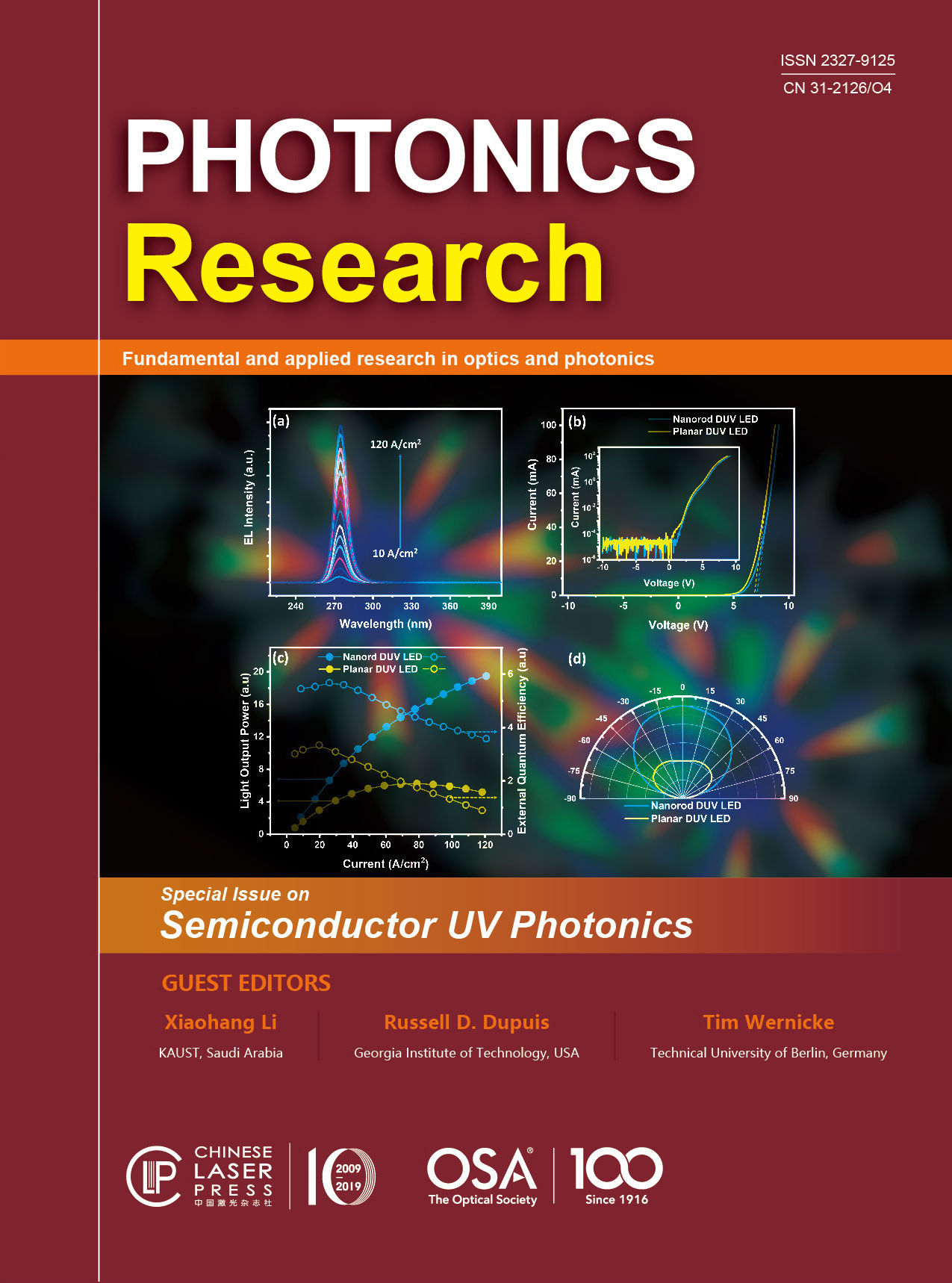- Special Issue
- Semiconductor UV Photonics
- 8 Article (s)
- Publication Date: Dec. 01, 2019
- Vol. 7, Issue 12, 120SUVP1 (2019)
- Publication Date: Apr. 29, 2019
- Vol. 7, Issue 5, 050000B7 (2019)
- Publication Date: Jun. 24, 2019
- Vol. 7, Issue 7, 07000B36 (2019)
- Publication Date: Jun. 24, 2019
- Vol. 7, Issue 7, 07000B41 (2019)
- Publication Date: Jul. 15, 2019
- Vol. 7, Issue 8, 08000B48 (2019)
- Publication Date: Aug. 01, 2019
- Vol. 7, Issue 8, 08000B55 (2019)
- Publication Date: Aug. 15, 2019
- Vol. 7, Issue 9, 09000B66 (2019)
- Publication Date: Oct. 30, 2019
- Vol. 7, Issue 11, 11000B73 (2019)
UV light has been utilized by people in numerous critical applications for over 100 years. However, mainstream UV emitters and detectors are often bulky and inefficient. Recently, large investment and progress have been made by institutions and companies around the world to create and improve semiconductor materials, structures, and devices for more efficient generation and manipulation of UV light with a much smaller footprint and better reliability. This feature issue will cover modeling, experimentation, and applications related to UV photonics research and its applications.
This feature issue in Photonics Research will serve as a venue for the most recent publications in the increasingly popular research area of semiconductor ultraviolet (UV) photonics, which has found broad applications in sterilization, communication, sensing, curing, medical treatment, and national security.










